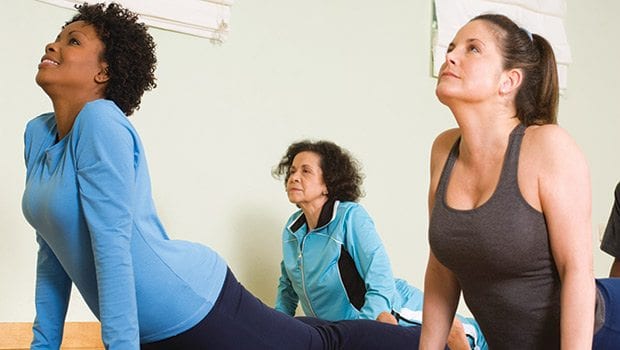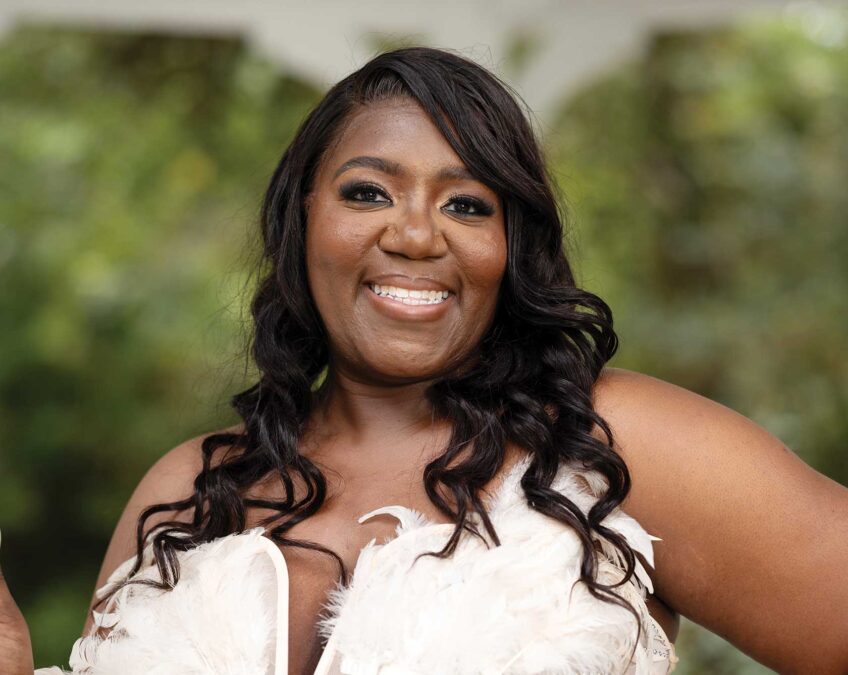
Although some people who practice yoga can stand on their head or contort their bodies into pretzel-like forms, physical prowess is not the major focus of this ancient discipline. Rather, the purpose of yoga is to combine physical postures called asanas with proper breathing to attain meditation and inner peace.
Yoga dates back to 500 B.C., and in the Eastern culture it is closely linked to spirituality. Once the practice crossed the ocean to the West, the religion part tended to fall by the wayside, but the exercise and mindfulness remained.
It is estimated that over 20 million people in this country practice some form of yoga. There are at least 20 different types ranging from gentle to physically strenuous. Regardless of its intensity, it is yoga’s intent to help unclutter the mind to get a person more focused. It is considered an integral part of complementary and alternative medicine.
Through the years it was discovered that yoga can strengthen muscles, improve posture, reduce back pain and lower blood pressure and heart rate. More recent studies suggest that yoga is beneficial for people with mental illness.

Author: Courtesy Laura malloyLaura Malloy, LICSW, Director of Yoga Programs, Benson-Henry Institute for Mind Body Medicine Massachusetts General Hospital
Laura Malloy, the director of yoga programs at the Benson-Henry Institute for Mind Body Medicine at Massachusetts General Hospital, is not surprised. Malloy practices and teaches Kripalu yoga, a gentle form of Hatha yoga, and is certified at the 500-hour level. Malloy is also a licensed independent clinical social worker. In other words she helps soothe the mind as well as the body of her clients.
Kripalu is called the yoga of consciousness with an emphasis on meditation and physical healing. Practitioners hold postures and develop inner awareness followed by meditation while moving spontaneously from one posture to another.
That’s why Kripalu is called ‘meditation in motion,’ explained Malloy.
There is emerging evidence that yoga is beneficial for the treatment of several types of mental illnesses. Studies have suggested that yoga increases levels of a chemical in the brain called GABA. Low levels of GABA are associated with anxiety and depression. One particular study found that yoga was more effective than walking in modifying the concentration of the chemical.
At the Anxiety and Depression Association of America Conference 2015 researchers presented a study on the impact of yoga on stress, depression and anxiety. The study included a small sample of women who had mildly elevated anxiety as well as moderate depression and high stress levels. Those who received two 90-minute yoga classes a week showed improvement in all three conditions.
An interesting finding of the study was that yoga’s effects on stress and depression were somewhat greater for African American women. The sample size, however, was too small to draw any definite conclusions.
Some poses are particularly beneficial to alleviate depression. Depressed patients may suffer poor body image and assume a posture of rounded shoulders, bowed head and curved back. The bridge pose causes you to roll your shoulders back and straighten your spine while concentrating on deep breathing. Yoga instructors say it “opens the chest.”
It’s not exactly clear why yoga works. But Malloy is convinced it does. “It helps in emotional release,” she explained. She referred to the saying “the issues are in the tissues,” which means that we tend to store emotions in our bodies. “If a person has not processed grief, for example, feelings can bubble up during the practice.”
Other forms of exercise, such as t’ai chi and aerobic exercises like running and walking, are recommended for those with mental disorders. Yoga and t’ai chi share some characteristics, such as deep breathing and slow controlled movements. Some aerobics, however, may not include mindfulness. “You could be watching TV while on the treadmill,” Malloy explained. “You’re paying attention to the TV and not yourself.”
Malloy has only one regret about yoga. “I wish it could last longer,” she said.







